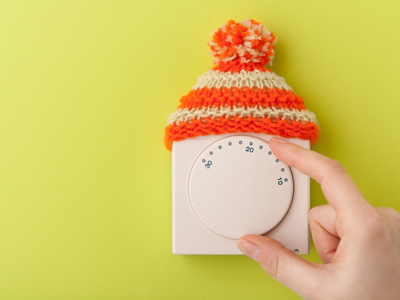
Physics - Heating and Insulating Buildings (AQA)
The transfer of heat (thermal) energy is studied in GCSE Science. This is one of eight quizzes on that topic and it looks specifically at some ways of heating and insulating buildings in order to save both energy and money.
Keeping the warmth inside a home is an important consideration for many people. The architect who designs buildings needs to know how good different materials are at insulating them, so they can work out what sort of heating system will work the best. For whoever pays the bills, knowing where the most heat is being lost, and how to slow down that heat loss, will help them to save money on their heating bills. For anyone keen on environmental issues and keeping their carbon footprint as low as possible, knowing which environmentally friendly materials are the best insulators is essential.
This is the point that U-values step in! These are a measure of how fast heat can pass through a material. Building materials have been tested and their U-values worked out. A lower U-value indicates that heat only passes through the material slowly, therefore the material is better at insulating than one with a high U-value, and vice-versa. You don't need to know any specific U-values or how they are calculated.
Heating well insulated buildings requires less energy overall and so saves money on the heating costs. It also helps to reduce the emissions of carbon dioxide. Unless the building is heated by a non-polluting supply of electricity or by geothermal energy, somewhere down the line carbon dioxide will be released into the air. Let's take for example using electric storage heaters. These transfer electrical energy into heat, taking their electricity from the National Grid. Most National Grid electricity is produced in conventional power stations which release large quantities of carbon dioxide into the air. Using gas or oil fired central heating systems puts carbon dioxide into the air directly.
Using wood fired heating is more environmentally friendly as the carbon dioxide released is called current carbon. In other words, it is carbon from the present time rather than being from millions of years in the past, as happens when burning fossil fuels. For hot water, solar panels on the roof of a building use the Sun's heat instead of burning fuels.
Ready for more?
not all...
quizzers. Try to win a coveted spot on our Hall of Fame Page.







